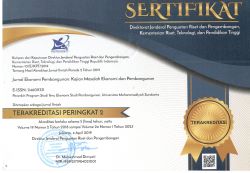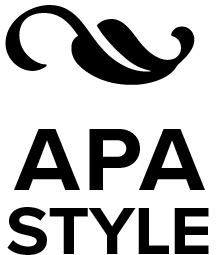IMPLEMENTASI PEMBANGUNAN DAERAH: STRATEGI MANAJEMEN SUNGAI "KALI SEMARANG"
Harry Soesanto(1*)(1) Fakultas Ekonomi Universitas Diponegoro, Semarang
(*) Corresponding Author
Abstract
The stream of Semarang river starts from the southern part of Semarang, precisely from Kaligarang dam, then down to east until near Kariadi General Hospital and Flower market (defined as upper-stream) and passes behind Lawang Sewu building, Mayor Semarang Office, and Jalan Inspeksi in Thamrin (defined as middle-stream). To the north, goes to China town, Johar Market, Mberok Bridge and stream down to Java Sea (defined as lower-stream).
Until 1970 's, Semarang River was remaining used by community for washing, bathing and rearing fish. Even reach to early 1980 's many home industry of 'tempe-tahu' (a kinds of dish made by soyabeans which famous known as Javanese dish) utilized this river to wash the raw materials. However, all of those activities were dramatically gone due to the river is no longer sufficient to accommodate these purposes. Today, Kali Semarang is utilized by community for sewage, disposing garbage and drainage. The river body of Semarang River becoming shallow and narrower, then adversely due to the riverbank are utilized for illegal settlement and other purposes.
Institutional analysis and co-management approach that introduced by ICLARM (now is known as Wolfish) and defined in Pomeroy and William (1994) and Kuperan et al (2003) were employed to analyze the situation of Semarang River. The study found that involvement of community only is not enough to manage the river of Semarang. The government is the most suitable one since has authority, resources, and funding if to be compared by the other components of stakeholder.Keywords
Full Text:
PDFReferences
Igham, B. (1993). The Meaning of Development: Interaction between "New" and "Old" ideas. World Development, 21(11): pp.1803-1821.
Kuperan, Viswanathan; Jesper Raakjaer Nielson, Poul Degnbol; Mahfuzuddin Ahmed; Mafaniso Hara; Nik Mustapha Raja Abdullah (2003). Fisheries Co-Management Policy Brief: Findings from a Worldwide Study. Wolfish Centre. 2003. Penang, Malaysia.
Mason, Robert D; Douglas A. Lind and William G. Marchal (1999). Statistical Techniques in Business and Economics. Tenth Edition. McGraw Hill. International Edition.
Pomeroy, S. Robert; Williams, J. Meryl (1994). Fisheries Co-management and Small-scale Fisheries: A Policy Brief, ICLARM, Makati City, Philippines.
SPSS (1996). SPSS Base 7.0 for Window User's Guide". Marketing Dept, SPSS Inc. Chicago, IL 60611. Library of Congress Catalog CardNo:95-072795.
Susilowati, Indah and Lilin Budiati (2003). An Introduction of Co-Management Approach into Babon River Management in Semarang, Central Java - Indonesia. Journal Water Science and Technology. Issue 7;Vol.48. IWA Publishing, London.
______ (1999). "An Analysis of Co-Management Fisheries in West
Sumatra Province, Indonesia: A Case Study of Ikan Larangan", Research Report, International Center for Living Aquatic Resource Management (ICLARM), Manila, Philippines.
______ (1999) "A Review of Natural Resources Laws and Policies in Indonesia and its impact for fisheries co-management". Asian Fisheries Social Since Research Network. AFSSRN -ICLARM, May 1999.
¬¬______(2004). "Semarang River Will Long-life or Extinct? Reviving Involvement of Community Might Not Sufficient Effort". River Symposium 2004. Brisbane, Australia, 31 August -3September 2004
The South East Queensland Regional Water Quality Management Strategy Team (2001). Discover the waterways of South-East Queensland. Brisbane, Australia. http://www.healthywaterways.env.qld.gov .au
Article Metrics
Abstract view(s): 567 time(s)PDF: 766 time(s)
Refbacks
- There are currently no refbacks.















